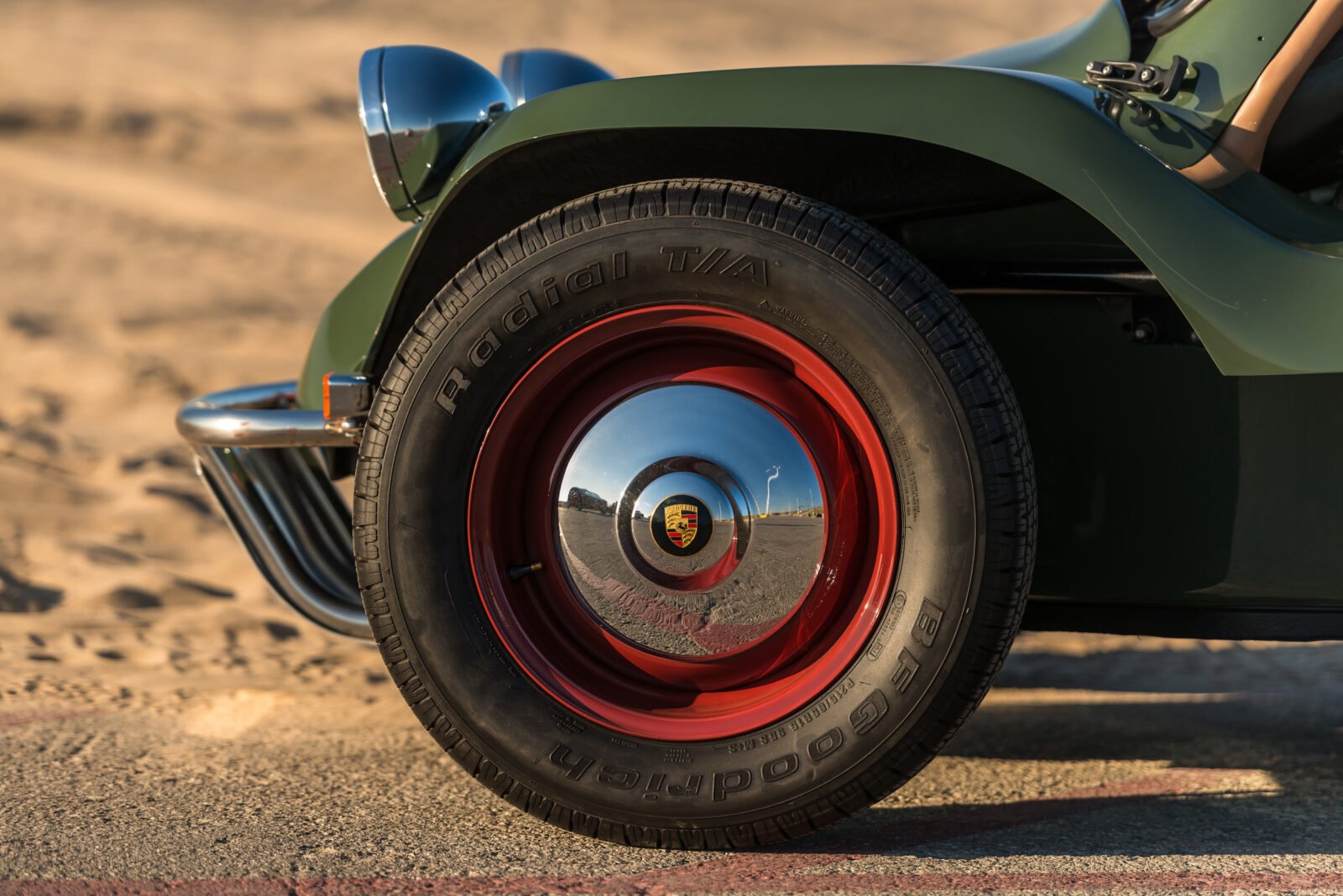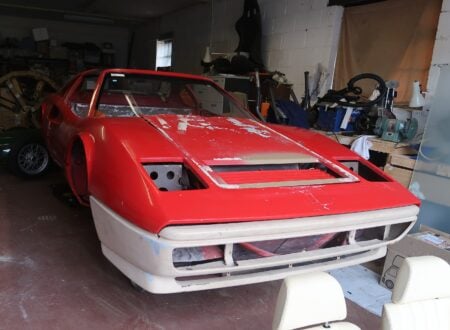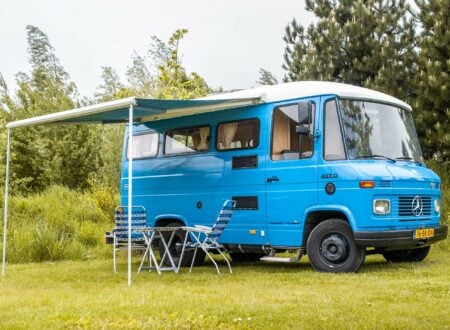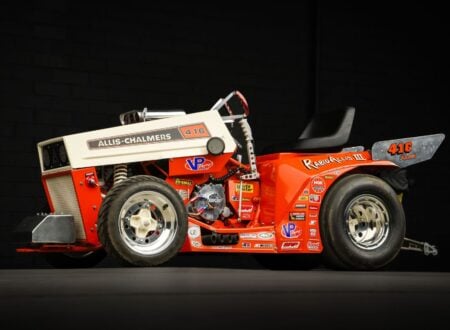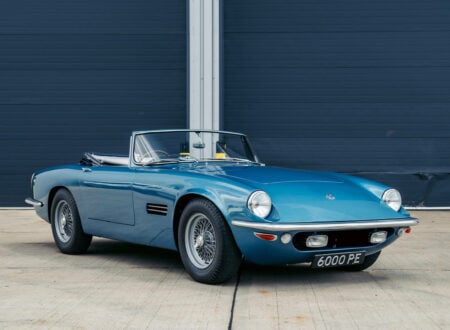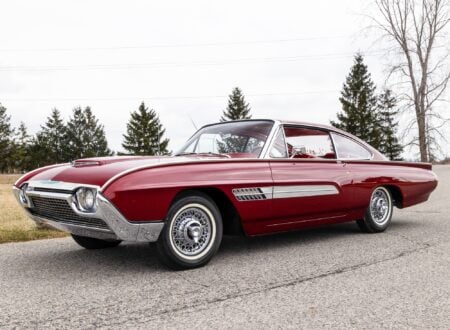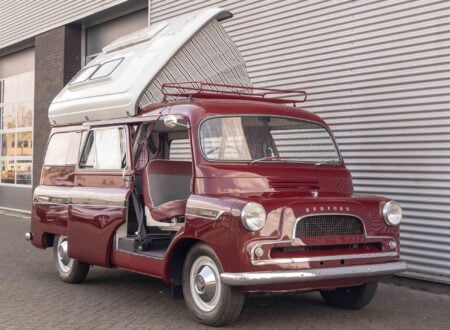The Meyers Manxter 2+2 is the slightly longer wheelbase version of the Meyers Manx – a dune buggy with a form so iconic that it’s been studied in design schools from California to Copenhagen.
Unlike the Manx, the Manxter uses a full-length VW Beetle floorpan, without requiring the cutting/shortening/welding of the original. This means that it offers seating for four rather than just two, or seating for two with space in the back for luggage, tents, and surfboards.
The Story of the Meyers Manx
The Meyers Manx is a dune buggy developed by Bruce Meyers, it originally had an advanced fiberglass composite monocoque body with a VW Beetle drive train and suspension attached, however this proved complex and costly to mass-produce. The second design still used a large fiberglass tub, but it was now bolted to a shortened VW Beetle floorpan. This hugely simplified the construction, and it resulted in the Manx being quite cheap to build – particularly as secondhand Beetles could be bought very inexpensively in the 1960s.
In his early life Bruce Meyers attended art school before finding his way aboard the aircraft carrier USS Bunker Hill as a gunner during WWII. The nautical life appealed to him (despite the best efforts of the Kamikaze) and after the war he found work building fiberglass boats for Jensen Marine in California.
This background in art and fiberglass boat construction perfectly prepared Meyers for what would become his most famous achievement. As an avid surfer he saw many dune buggies, almost invariably made from heavy American road cars. Bruce knew he could build something far lighter and faster using fiberglass – so he sketched out designs for an ideally proportioned dune buggy that was light, had large wheels and tires, a low center of gravity, minimal ramp over exposure, and optimal entry and departure angles.
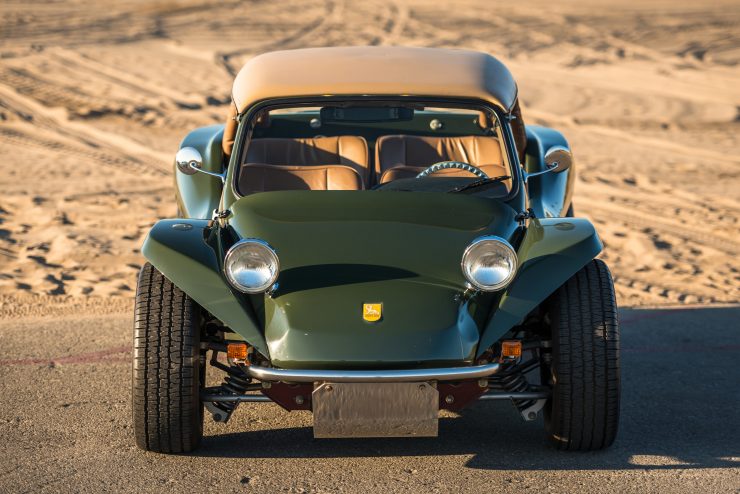
The decision to use a shortened VW Beetle platform was inspired, it meant the buggy would have independent front and rear suspension, a mechanically simple engine with no radiators or cooling hoses, and a rear weight bias that kept the weight over the driven wheels.
In 1965 Bruce started selling kits for people who wanted to build their own Meyers Manx buggy, and they sold like hotcakes. They sold so well in fact that it was difficult to keep up with demand, and a slew of copycats popped up offering Manx clones for discounted prices, with suboptimal materials and construction.
Over the course of the Manx heyday it’s estimated that over 350,000 were build – however only 5,000 or so of those were official Meyers Manx buggies. Bruce filed a court case to protect his intellectual property however the judge controversially ruled that his patent as unpatentable – opening the floodgates for those copying the design and resulting in B. F. Meyers & Co. going out of business in 1971.
Fortunately the story doesn’t end there. Bruce brought his buggy back in 2000 for a new generation, with updated designs including the Classic Manx, the Manxter 2+2, the Manxter DualSport, the Kick-Out Manx Traditional, the Kick-Out Manx S.S. and more.
VW Beetle floorpans can now be bought new, there are companies building them from scratch, so it’s now possible to build a brand new zero mile Meyers Manx for the first time since 1971.
The 1965 Meyers Manxter 2+2 Shown Here
The Meyers Manxter 2+2 you see here is based on a 1965 Beetle platform, and it benefits from a recent ground-up restoration by Manx specialists in San Francisco. It comes with its original Meyers Manx registry authentication plaque, identifying it as #0461, and it’s wearing a shade of Olive Green made famous by the Toyota FJ40 Land Cruiser.
The interior is finished with tan leather, and the red steel wheels are capped with chrome Porsche hub caps – a discrete reference to the shared heritage of Volkswagen and Porsche.
Unlike many Meyers buggies, this one comes with a removable fiberglass hardtop – a godsend when dealing with either rain for blazing sunshine. The rear-mounted engine is fitted with a bash plate and protective steel bars, as well as performance headers, high-flow air filters, and a CNC milled Meyers Manx rear protective plate.
If you’d like to read more about this Meyers Manxter or register to bid, you can click here to visit the listing on RM Sotheby’s.
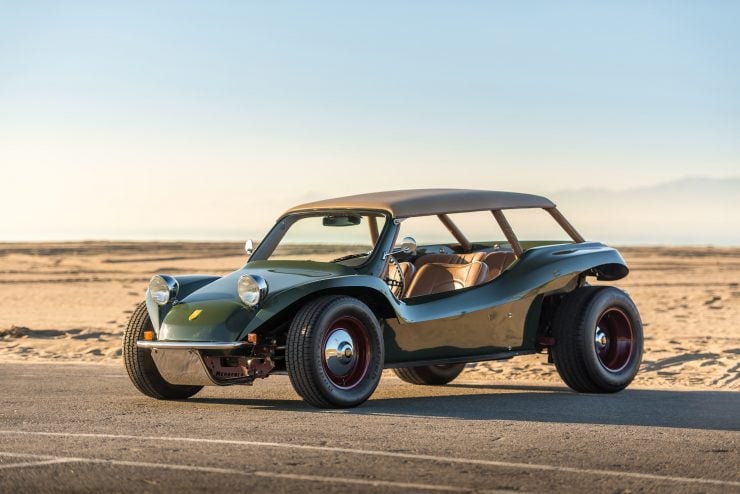
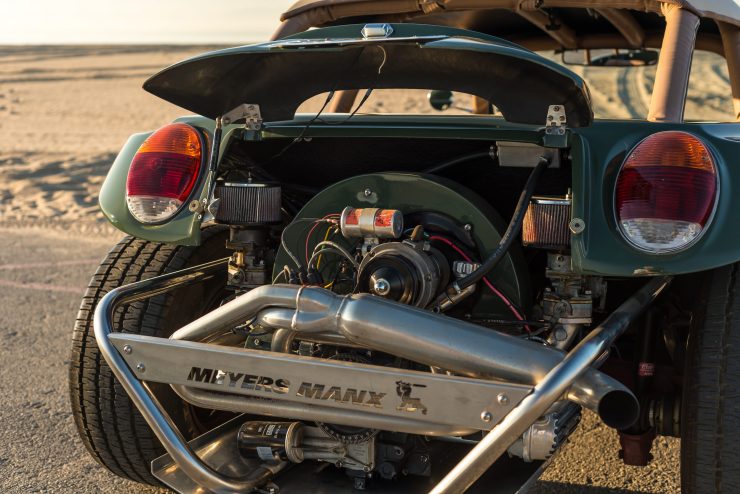
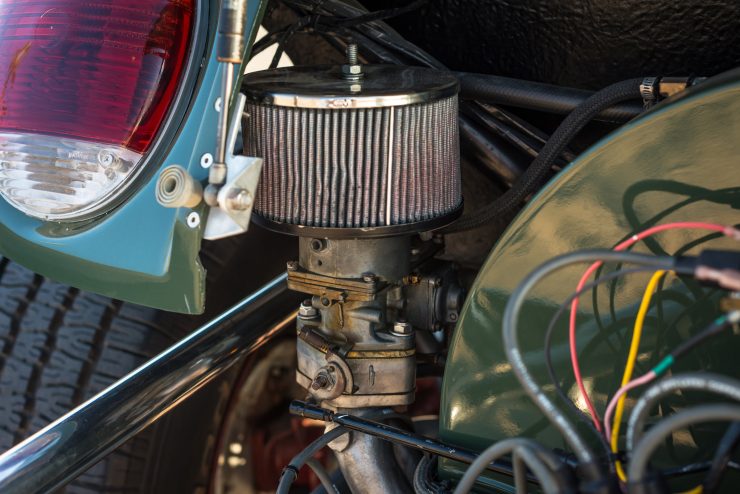
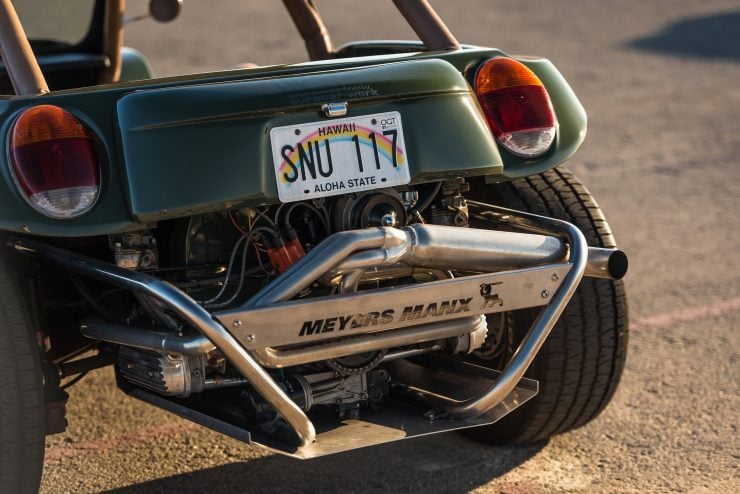
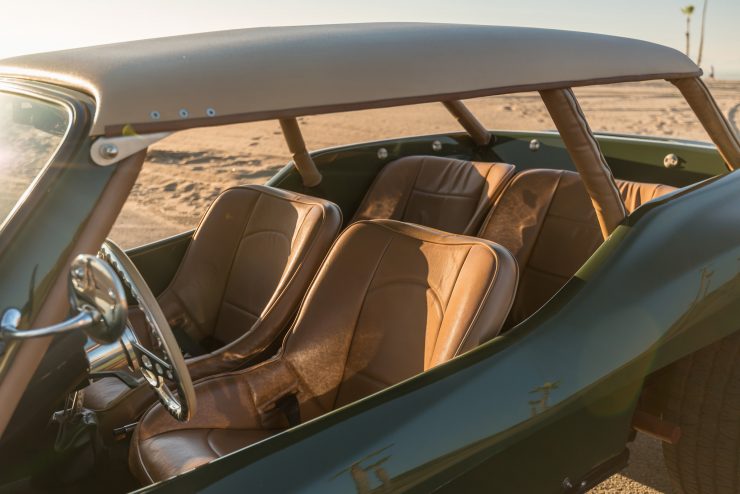
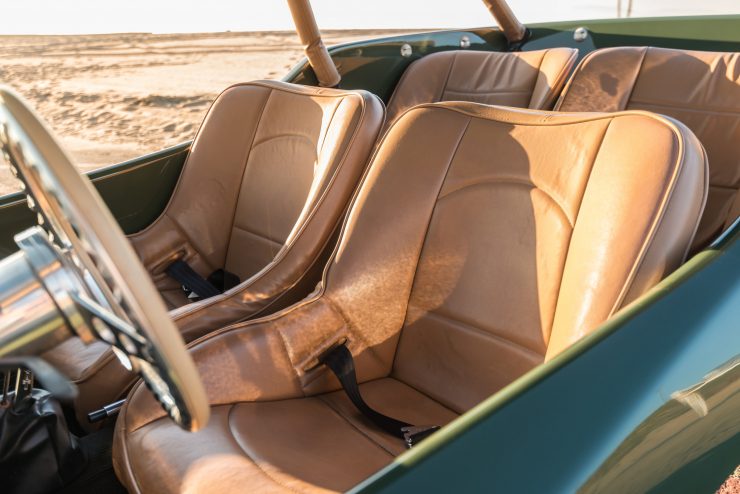
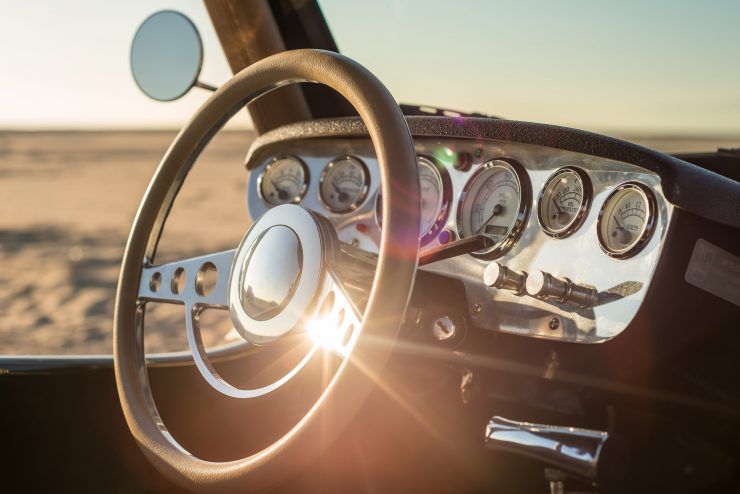
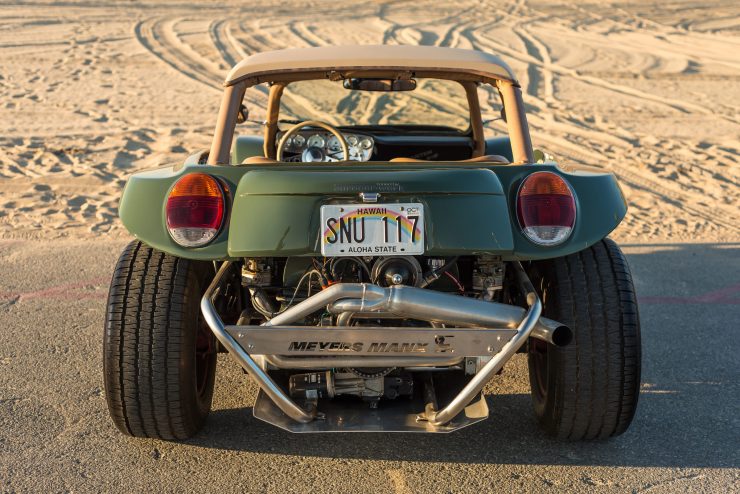
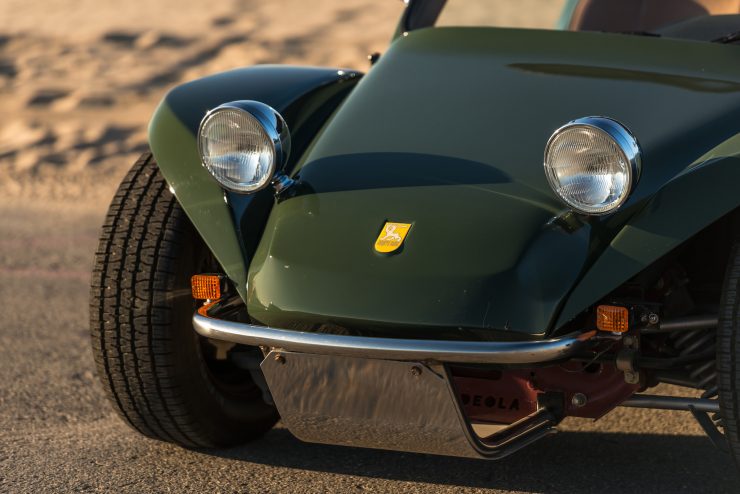
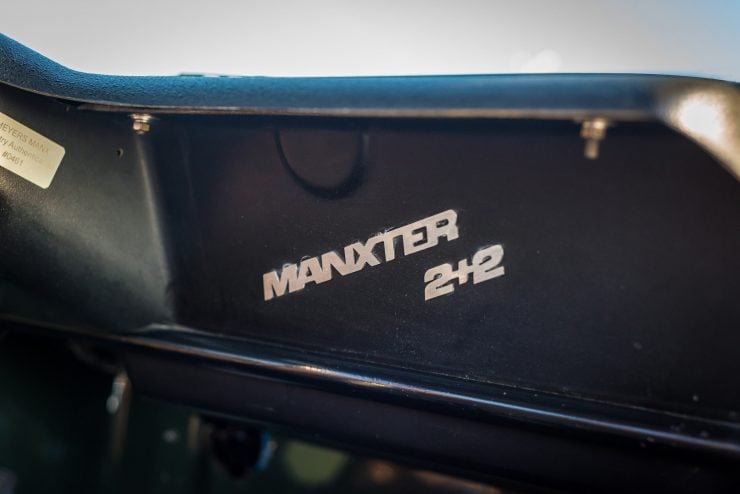
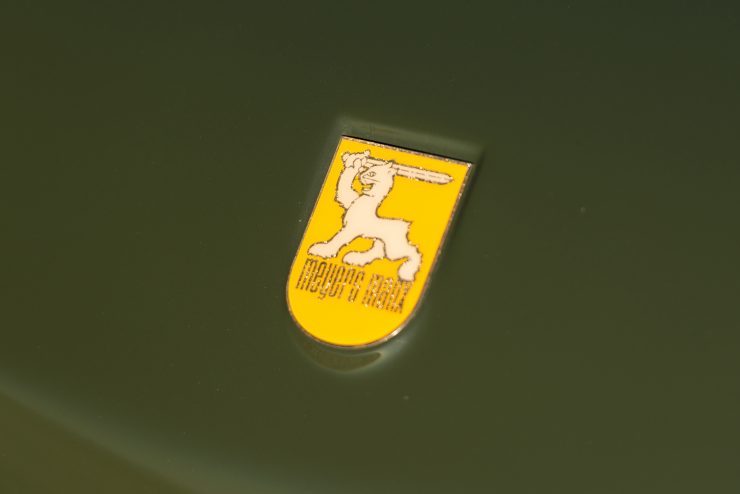
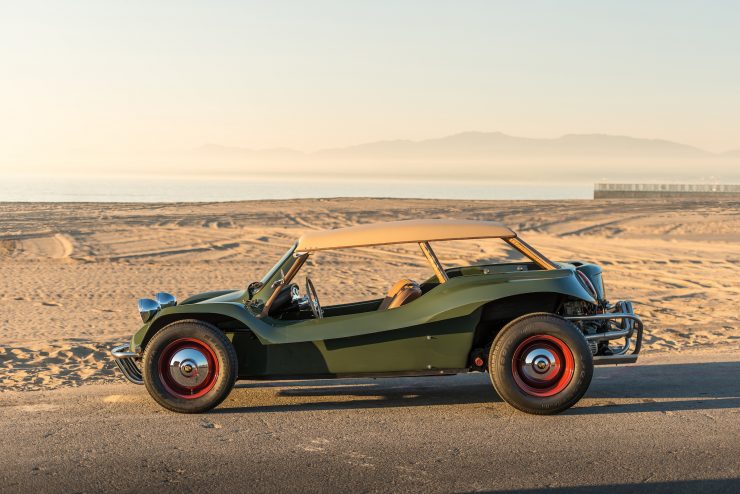
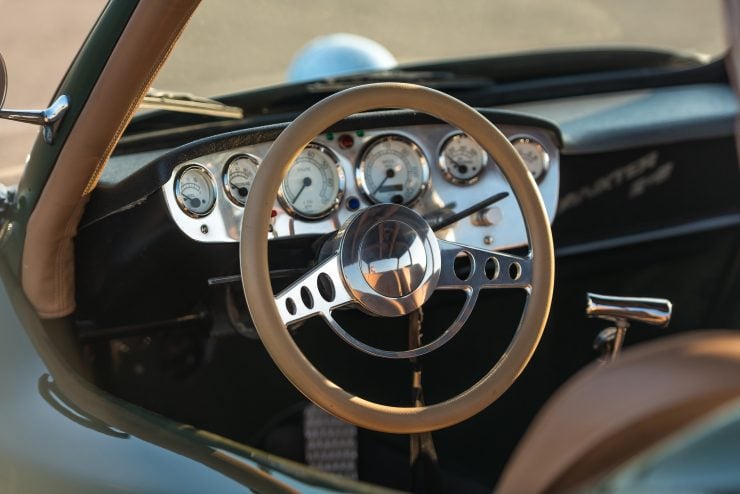
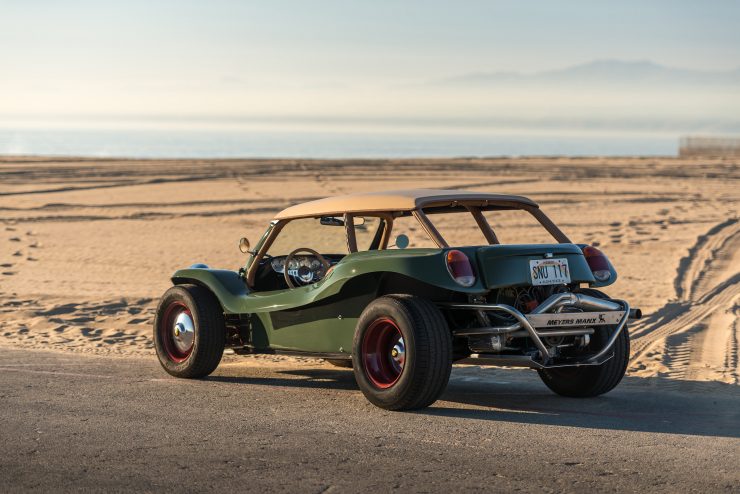
Images: Robin Adams courtesy of RM Sotheby’s ©2018

Articles that Ben has written have been covered on CNN, Popular Mechanics, Smithsonian Magazine, Road & Track Magazine, the official Pinterest blog, the official eBay Motors blog, BuzzFeed, Autoweek Magazine, Wired Magazine, Autoblog, Gear Patrol, Jalopnik, The Verge, and many more.
Silodrome was founded by Ben back in 2010, in the years since the site has grown to become a world leader in the alternative and vintage motoring sector, with well over a million monthly readers from around the world and many hundreds of thousands of followers on social media.

